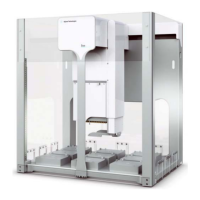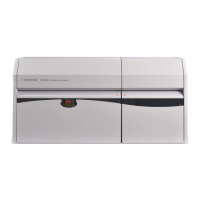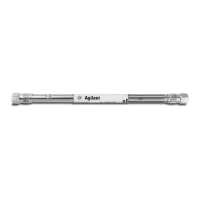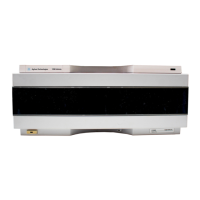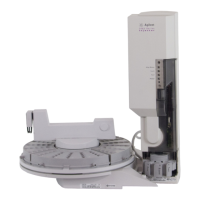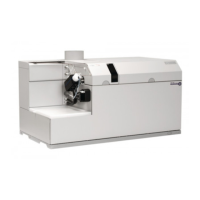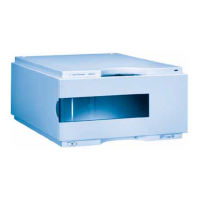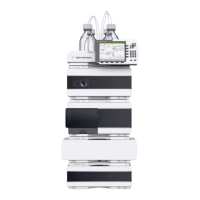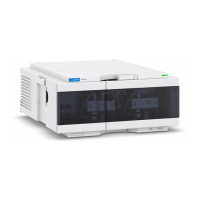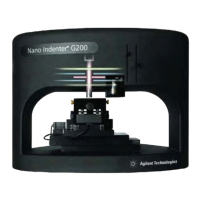7
PlateLoc Thermal Microplate Sealer
Optimizing seal parameters
Reference for Optimal Thermal Microplate Sealing
If the well impressions on the seal are significantly thicker than the chimney
wall (as shown in Figure 9), decrease the sealing temperature or duration.
Thick impressions may indicate excessive melting of the seal, causing the seal
to be difficult to remove and the resealing capacity reduced.
Figure 9 Evaluating rim width of seal. L: Good impression, with
thin, defined edge of chimney/
rim. R: Poor impression, with increased width.
Issues related to inserts
The hot plate is a heated metal surface that presses the seal onto the
microplate. For optimal sealing, the microplate needs to be firmly supported so
that it does not bend during the sealing process, often requiring use of an
insert to keep it flat. Figure 10 illustrates the effect of insert height on
microplate sealing. Left: if the insert is too thin, the center of the microplate
will bend downward during sealing, leading to good sealing around the edges,
but poor sealing in the middle of the microplate. Center: if the insert is the
correct thickness, the entire microplate surface will be sealed properly. Right:
if the insert is too thick, the edges of the microplate will bend downward
during sealing, resulting in good sealing in the middle of the microplate, but
poor sealing around the edges.
Note: Thick
er inserts are preferred over inserts that are too thin.
Figure 10 The effect of using inserts on microplate sealing. L: Insert too thin; C: Insert correct
heig
ht; R: Insert too thick.
Approximately same
thickness as chimney
wall
Thicker than chimney wall
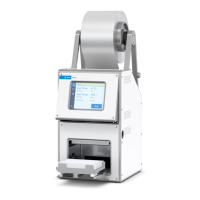
